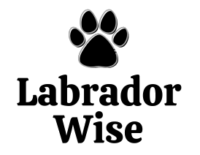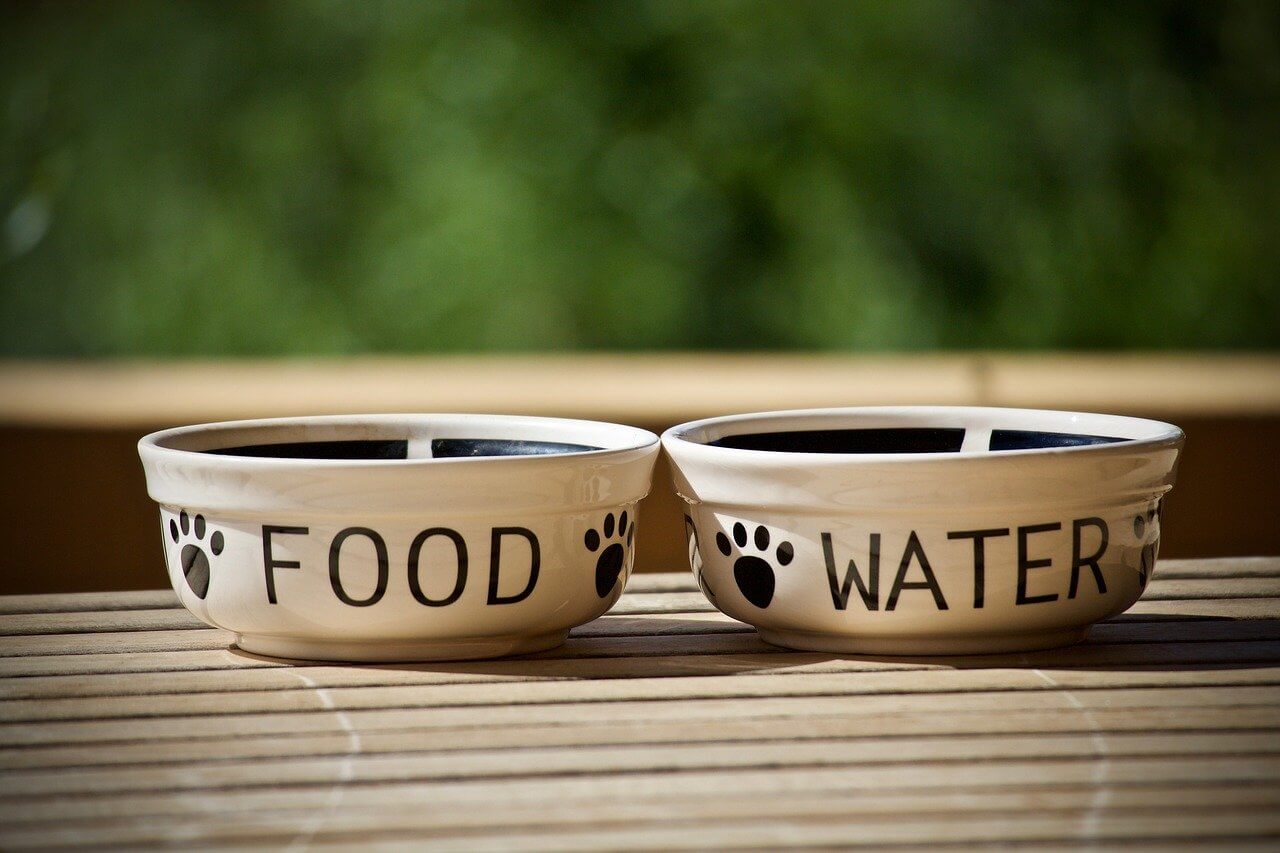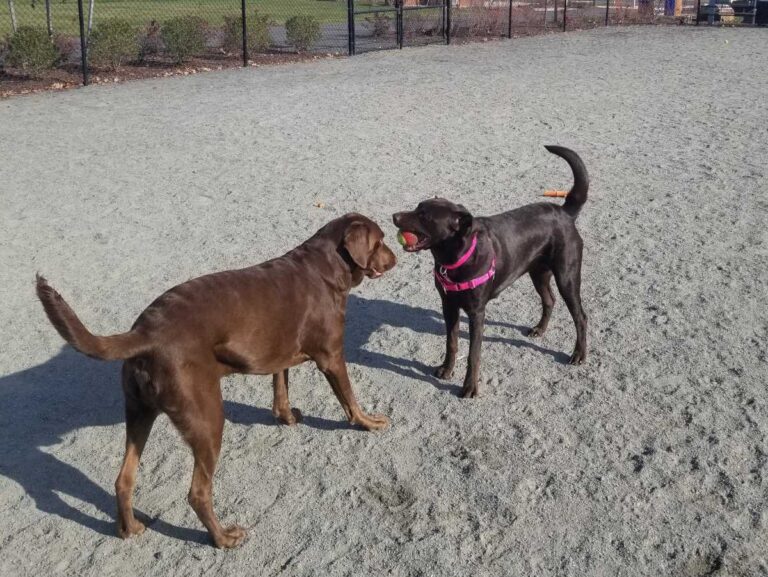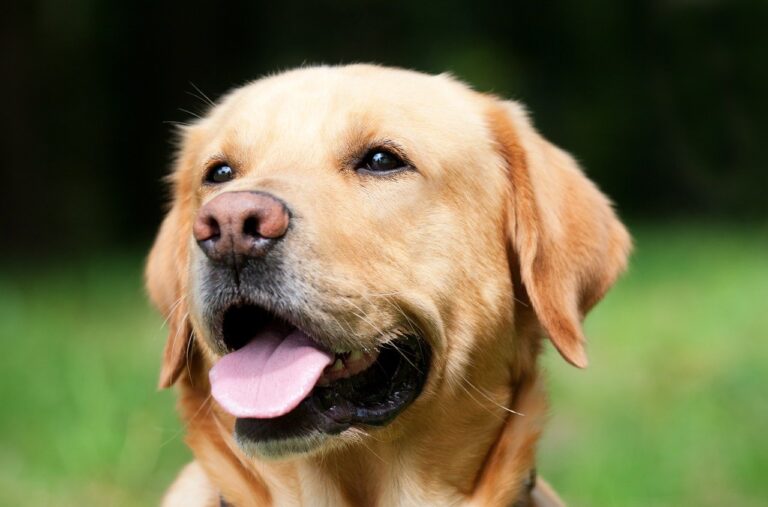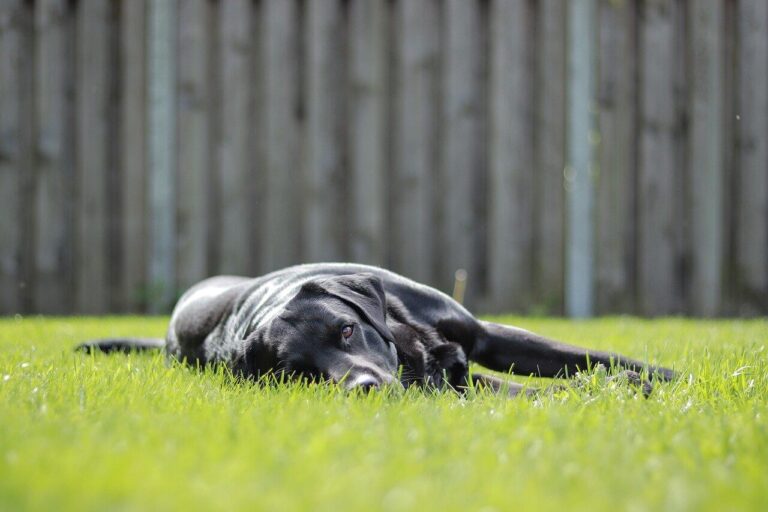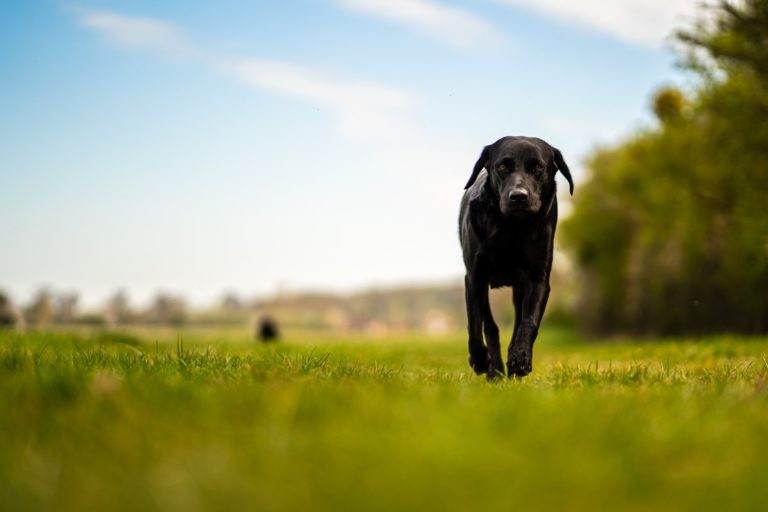Deciding on what food to feed your dog can be a difficult decision.
It’s really hard to figure out what the best food for dogs is when there are so many different kinds on the market, and it seems like it’s constantly changing.
You might also be dealing with trying to choose a food for a dog that has many different sensitivities, a situation we’re definitely familiar with among our Labradors.
It can also be a huge waste of money to try a bunch of different kinds of foods if your Labrador doesn’t do well with the ingredients, or if they refuse to eat it at all.
So how do you find the best food to feed your dog without losing your mind and wasting a ton of money? We’re going to save you a ton of frustration and wasted money by giving you some tips.
Let’s go over a few options so you know where to start.
Finding the Best Food for Your Lab
Benefits of a Good Food
Why should you put all this effort into trying to find the best food for dogs? Can’t dogs just eat any cheap food from the grocery store? We don’t suggest that!
(This article may contain affiliate links. As an Amazon Associate I earn from qualifying purchases. Learn more)
There are some definite benefits to putting your dog on a great food and keeping them on it throughout their life.
You’ll find that being on an excellent food will help your Lab have a luscious, shiny, and glossy coat. They’ll have less dry, flaky skin and it will help with shedding around your house.
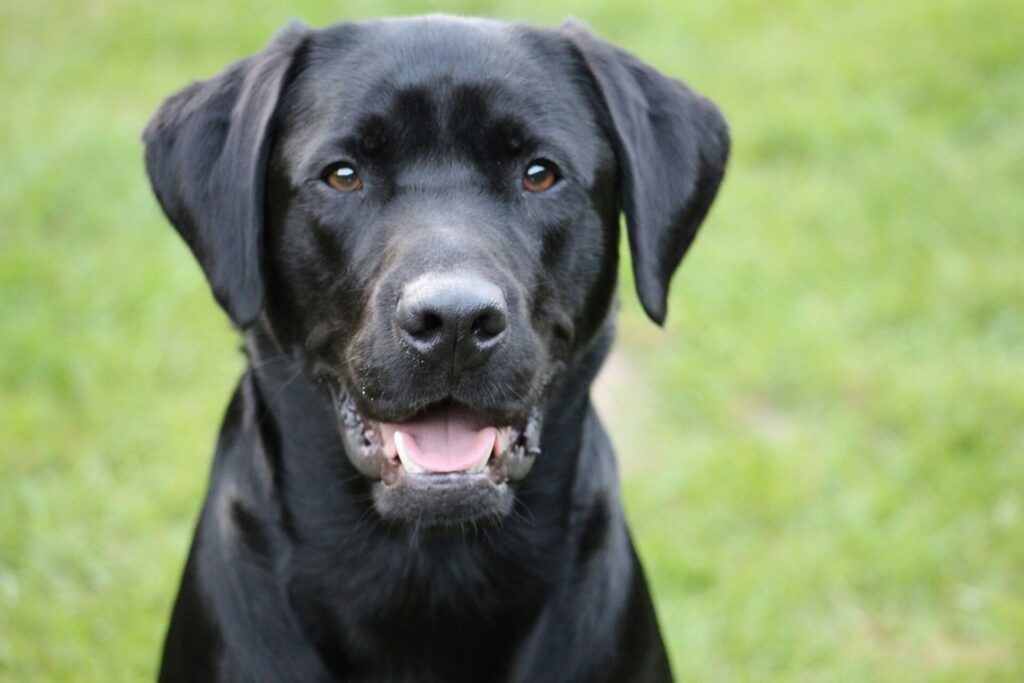
Choosing a great food will help keep your dog healthier, and less likely to suffer from joint issues or aggravating skin conditions.
Behaviors like constant scratching, biting their paws, and rubbing up and down the furniture might be reduced if their skin and coat are healthier.
You will also have fewer potty messes to deal with, and smaller and easier poop-cleanup when your dog is on a better-quality diet.
When we first adopted one of our rescue Labradors, he was scruffy looking and had a bit of a sad, neglected coat (poor little baby)!
We put him right away on a vet-recommended food that was well-formulated and derived its protein source from fish.
Within a few weeks, you could see a dramatic change in the color and fill of his beautiful Labrador coat, and he was so glossy and shiny he looked like a totally different dog!
So now that you’ve considered what it can do for you and your Lab to take the time to find the best food for dogs, let’s get going on a few steps to make that happen.
Start With Their Age & Stage
The first place to start in finding a great food for your dog is to address the current age and stage of your dog’s life:
- How old is your dog? Puppy? Senior? Middle adult age?
The food needs and requirements of a young puppy are very different than that of an older dog who isn’t undergoing such a dramatic period of growth.
- Is your dog a high-energy, active Labrador? How much exercise do they realistically get in a typical day?
Most Labs are very energetic, but may slow down a bit as they get older. If your dog is a mixed-breed or other kind of dog, they may have a very different activity level (like our friend’s mellow Basset Hound).
- Does your dog to agility contests, performance trials, or other competitive work?
A dog with higher activity levels as a part of daily life will have different food needs than a family dog whose days are spent mostly cuddling on the sofa.
- Is your dog a female who may be going into heat, or are you planning to breed her?
The nutritional needs of a pregnant and nursing mother dog are much higher than a typical Lab!
- What size is your dog? If your dog is a Labrador, they can vary typically in size from 50-100 lbs, which is the difference between a medium-sized dog and a large, or extra-large one!
A large breed dog might have more joint issues to consider and have different needs than a smaller breed of dog.
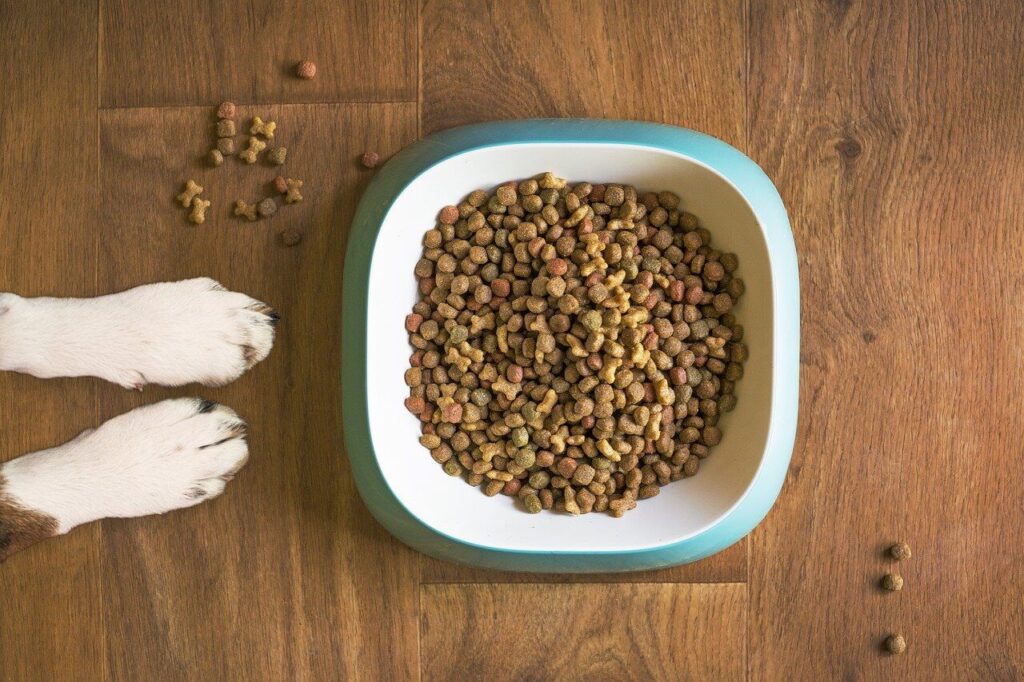
Look for a food that indicates it’s for the proper age, activity level, and stage of your pet. This will be the first place to start, but we’re not finished yet! There’s a bit more information to gather to help you make the right choice.
Ask Your Vet For Recommendations
When searching for the best food for dogs, your veterinarian is another great resource for recommendations. They typically are well-versed in the science of pet nutrition and can give you tips on the most up-to-date research, such as the topic of taurine in dog foods (which we’ll cover more about in just a moment).
If you have a puppy and you’ve gotten them from a breeder, the breeder can also give you excellent advice on what foods they’ve had good luck with regarding their own dogs.
They’ll also be able to tell you what specific food your new puppy has been on since they started solid kibble food (usually at about 4 weeks of age).
When you first pick up your puppy from the breeder, you’ll definitely want to keep them on the same exact food they’ve been on, so as to not upset their delicate tummies in a time of stress and transition.
For more on this topic, and tips for what else to do as you’re picking up your new puppy, read 7 Things to Do Before You Pick Up Your New Puppy.
Consider the Ingredient Profile Carefully
Here’s where you’ll want to explore the ingredients of each food your considering in more detail. When trying to figure out the best food for dogs, it can be overwhelming looking at the bags of food at the pet store or online.
Many of them sound the same, and have the same ingredients but in a different order. Does it really matter that much? It can.
Then there’s also the consideration of wet food vs. dry kibble. Are you supposed to give your Lab only dry food? Or a mixture of both?
We’ve faced all of these issues before and we’re here to simplify this part of the process for you.
Some things to know when looking at ingredients:
- Dog food should contain a combination of protein, fat, vegetables, and possibly grains or fruits, depending on the food.
- Lower-priced foods have cheaper, filler ingredients, such as corn, wheat, and soy. Higher quality foods will have less of those ingredients.
- Check to see that any commercial dog food you’re considering meets the standards of the Association of American Feed Control Officials.
Your food should show on the bag that it meets the nutritional profile of AAFCO’s recommendations. AAFCO doesn’t regulate the food or the dog food company, but what they do is establish the nutritional profile the food should meet (protein, fat, fiber and moisture). You may see this with a header labeled “guaranteed analysis.”
AAFCO establishes the nutritional profile that companies should follow, and it’s up to the dog food companies to follow it (and state regulatory officials to enforce it).
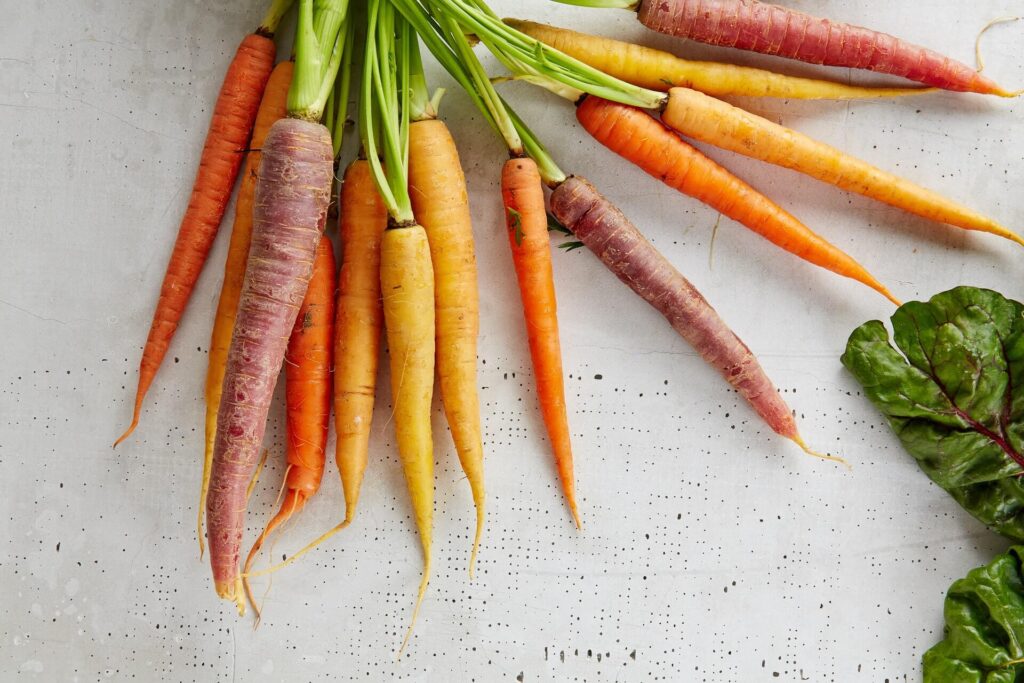
You might also find things added into a particular food, like omega fatty acids, or glucosamine for joint health, common in large-breed foods. Ask your vet if you need a food that has those additives.
Specific foods that are targeted to large-breed dogs, such as Labradors, might also have kibble-size that is larger than the regular or small-breed kibble pieces.
This is important because the chewing and crunching of the bigger kibble pieces will require your dog to slow down their eating speed, and it will also help a bit in cleaning their teeth.
You can also slow down a fast eating dog with a “slow-feeder” type dog bowl. These can be found at the pet store, or on Amazon for about $10-15. We love them and have found they definitely work in slowing down hungry Labs!
Some Labrador owners like to mix dry kibble dog food with wet kibble food, or a raw food. Talk to your vet about whether your dog needs to have both, or one or the other.
Be aware that some dogs, especially Labradors, might protest if you add wet or canned dog food, but then transition away from it to only dry food. You might get complaints!
Adjust Based on Your Dog’s Particular Nutritional Needs
Another consideration that’s been talked about a lot in the dog world recently is grain-free food.
Grain-free foods have been gaining traction in the last decade as people began looking for options to help dogs with skin sensitivities and allergies.
We personally experienced severe and debilitating allergies that required surgery with one of our chocolate Labradors. We ended up having to put him on a duck and potato dog food, but other options we had were venison and kangaroo!
If you’re considering a grain-free food for your dog, talk to your vet about this for their recommendations. We’ve had vets tell us it’s fine for certain circumstances, but then had other vets tell us to avoid doing it.
There has been recent research conducted about instances of dilated cardiomyopathy in dogs, with a possible link being considered to lack of taurine, and whether or not grain-free foods contain it (as some do not).
Our vet recommended to us that we make sure any grain-free food has taurine as an ingredient, so make sure you talk to your vet about whether or not a grain-free food makes sense for you.
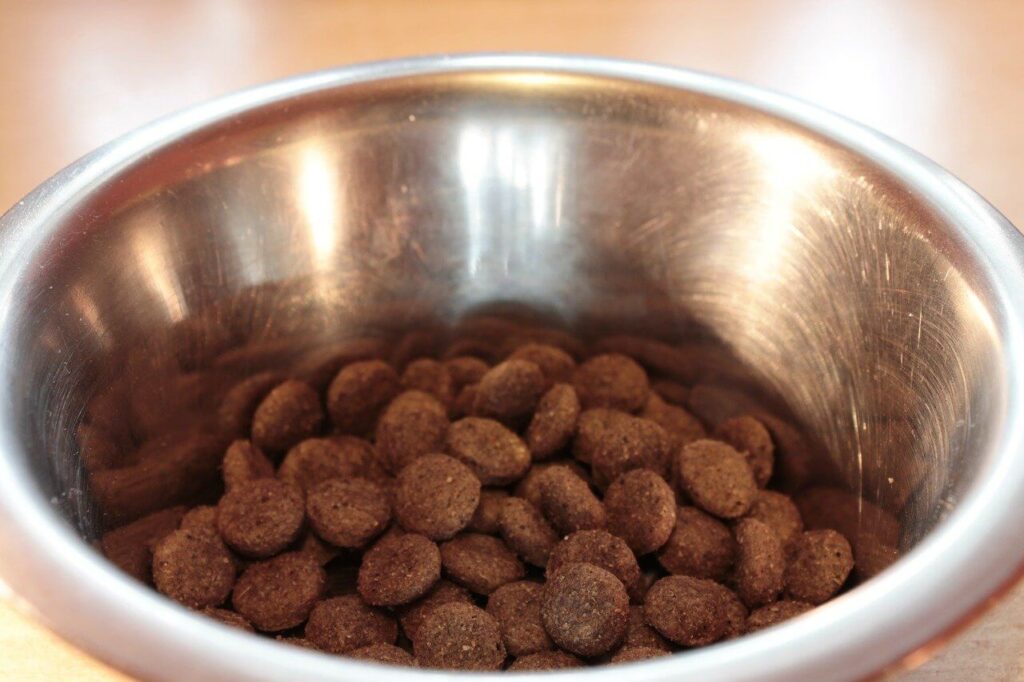
Summary
Trying to find the best food for dogs can be overwhelming and ever-changing. But finding a good food is an important part of giving your pet a great life.
Knowing the basics of what to look for and what to ask can make the process easier. Taking the time to make the right decision will be worth it for you and your dog.
